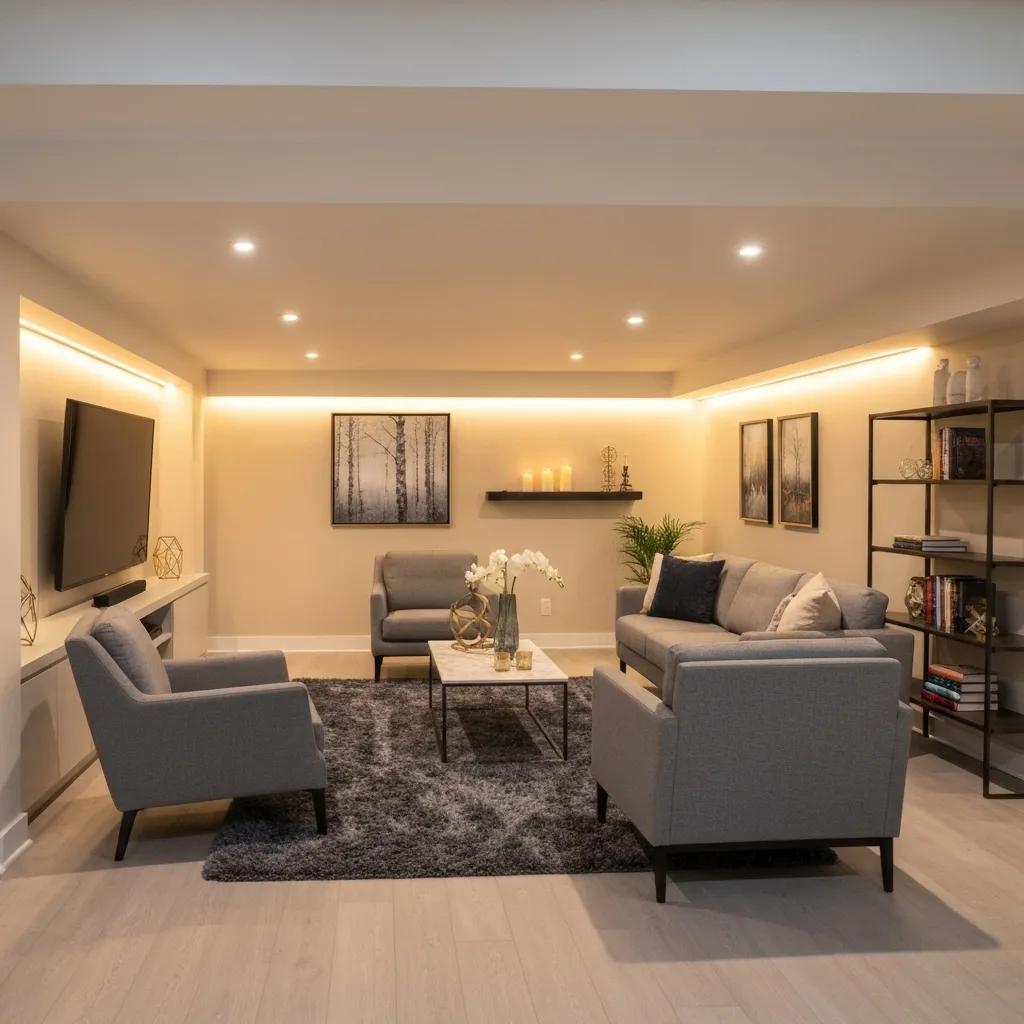
Essential Tips for Ensuring Proper Ventilation in Your Finished Basement to Combat Mold Growth
The finished basement is an attractive extension of every home, and basement finishing des moines services have enhanced its appeal. Yet proper ventilation is crucial to prevent mold growth and moisture issues. Homeowners in des moines, Iowa and surrounding areas may face high humidity, stale air, and unwanted odors. This article offers guidance on recognizing poor ventilation signs, selecting appropriate systems, and implementing best practices to protect your space from mold, water vapor, and moisture-related problems.
Key Takeaways
- Poor basement ventilation is signaled by excess humidity, mold growth, and stale air.
- Dehumidifiers, exhaust fans, and air purifiers reduce moisture and pollutants while ensuring airflow.
- Regular humidity monitoring with hygrometers and combining ventilation with waterproofing are essential.
- Customized installation and routine maintenance of ventilation systems extend your basement’s lifespan.
- Integrating ventilation with moisture controls like vapor barriers and proper drainage improves indoor air quality.
What Are the Key Signs of Poor Ventilation in a Finished Basement?
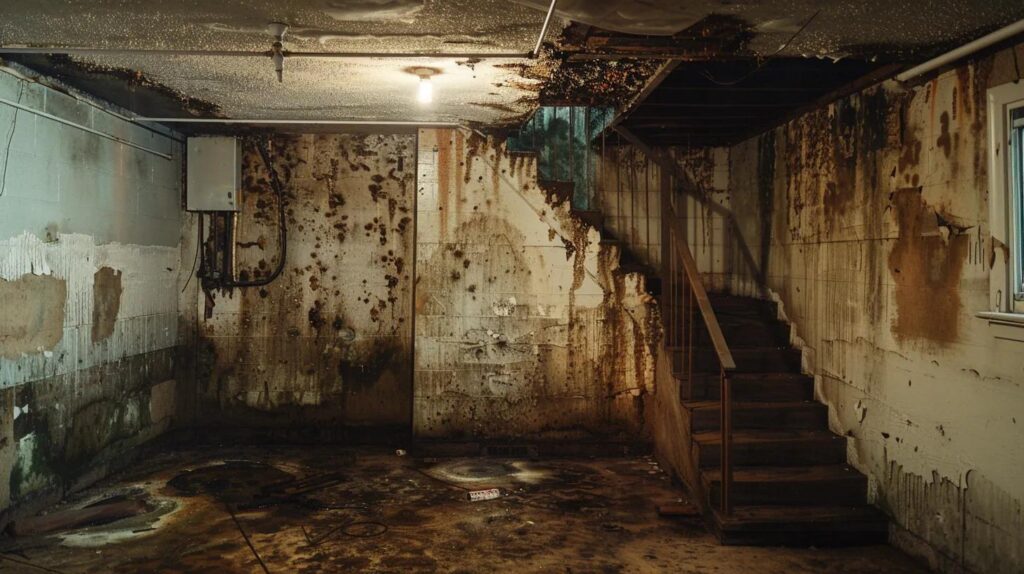
Poor ventilation in a finished basement is indicated by persistent dampness, condensation on walls and ceilings, and a musty odor. These symptoms suggest that excessive water vapor and organic compounds are building up, which can accelerate the decomposition of organic matter and foster ideal conditions for mold adhesion.
How Does Excess Humidity Indicate Ventilation Problems?
Excess humidity leads to surface condensation and encourages mold growth. Maintaining humidity below 50% is critical, and a hygrometer helps homeowners determine if additional dehumidification or airflow improvement is needed. Readings consistently above this threshold signal inadequate dispersion of water vapor.
What Are Common Mold Growth Indicators in Basements?
Visible mold patches on walls or ceilings, along with a pronounced musty smell, are common indicators. These may appear on carpet fibers, wood, or other porous materials, revealing that stagnant air and moisture are promoting mold proliferation.
How Can Stale Air and Odors Signal Ventilation Issues?
Stale, odoriferous air shows that pollutants and moisture are not being replaced by fresh air. Without proper air exchange, moisture and contaminants accumulate, providing a favorable environment for mold formation.
Which Ventilation Systems Are Most Effective for Finished Basements?
Choosing the right ventilation systems is key to managing moisture and maintaining good indoor air quality. Homeowners should evaluate dehumidifiers, exhaust fans, and air purifiers to lower humidity levels and inhibit mold.
How Do Dehumidifiers Help Control Basement Humidity?
Dehumidifiers remove moisture from the air, reducing condensation and curtailing mold growth and organic matter decomposition. Modern models operate quietly and efficiently even in larger spaces, making them ideal for continuous moisture management.
What Role Do Exhaust Fans Play in Moisture Removal?
Exhaust fans expel stale, moist air while drawing in drier external air. They are especially effective in areas with high moisture production, helping to regulate water vapor and prevent condensation that can lead to mold colonization.
How Can Air Purifiers Reduce Mold Spores and Allergens?
Air purifiers, particularly those with HEPA filters, trap airborne mold spores and allergens. Paired with ventilation systems, these devices enhance indoor air quality by reducing particles that can trigger allergic reactions and respiratory issues.
Why Is Proper Airflow Design Crucial for Basement Ventilation?
Effective ventilation relies on strategic airflow design to eliminate dead zones where moisture accumulates. Proper placement of vents, fans, and dehumidifiers ensures continuous circulation, minimizes moisture pockets, and supports efficient integration with waterproofing measures.
How Can I Maintain Optimal Humidity Levels to Prevent Mold in My Basement?
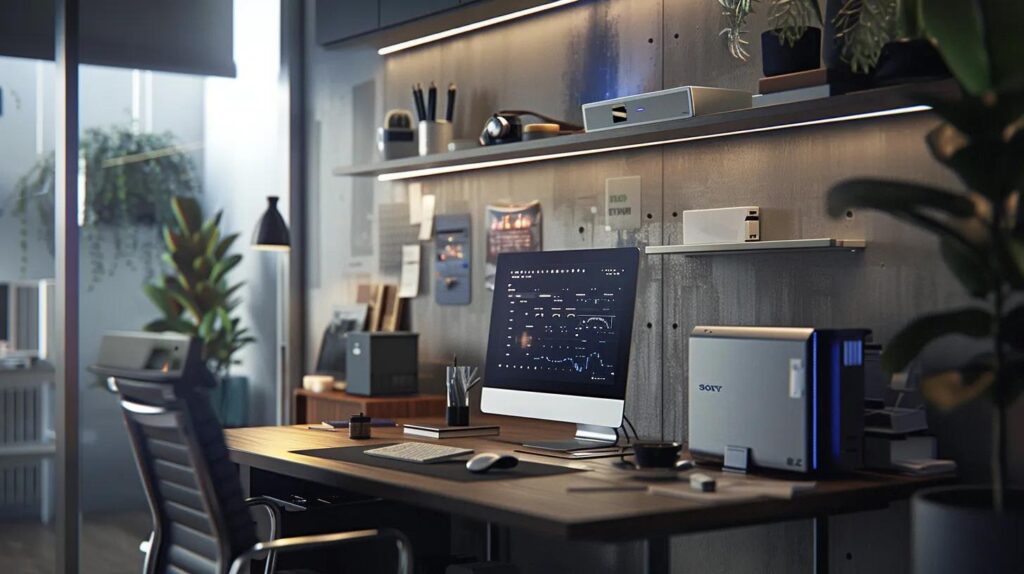
Keeping humidity within the ideal range is vital for mold prevention. Consistent monitoring and effective moisture control tools help maintain dry, fresh air and protect the basement’s integrity over time.
What Is the Ideal Humidity Range for Finished Basements?
The optimal humidity range is between 30% and 50%. Maintaining this range prevents condensation on walls and floors, reducing conditions that favor mold and mildew formation.
How Often Should Basement Humidity Be Monitored?
Regular monitoring, ideally daily or at least weekly, with a digital hygrometer is recommended. This ensures that any deviations from safe humidity levels are addressed promptly through adjustments in dehumidifier settings or exhaust fan operations.
Which Tools Are Best for Measuring Basement Humidity?
High-quality hygrometers and digital moisture meters offer real-time data and, in some cases, alert systems when safe thresholds are exceeded, prompting immediate remedial actions.
How Does Ventilation Work Together With Waterproofing to Control Moisture?
Ventilation and waterproofing complement each other; while ventilation circulates and exchanges air, waterproofing methods such as vapor barriers and sealing cracks prevent external water intrusion. Together, they dramatically reduce moisture buildup and the risk of mold growth.
What Are the Best Practices for Installing Ventilation in Finished Basements?
Effective ventilation installation requires careful planning to accommodate the basement’s layout and size. Following best practices ensures continuous air circulation and prolongs the finish’s durability.
How Should Ventilation Systems Be Customized for Different Basement Sizes?
Customization is key: larger basements may require multiple dehumidifiers and exhaust fans for even distribution, while smaller spaces might manage with a single unit and properly placed vents. System sizing should consider the basement’s activities and layout.
When Is Professional Installation Recommended?
Professional installation is advisable for custom ductwork, integrating with existing HVAC systems, or when complex waterproofing is needed. Experts can design a system that eliminates dead zones and moisture traps while optimizing energy efficiency.
How Can I Ensure Continuous Air Circulation Throughout the Basement?
Ensuring clear airflow paths around furniture and structural elements is essential. Combining ceiling fans, dehumidifiers, and exhaust systems, along with regular airflow tests and maintenance checks, maintains efficient air circulation.
What Maintenance Is Required to Keep Ventilation Systems Effective?
Routine maintenance, such as cleaning filters, checking ductwork, and servicing mechanical parts, is critical. Seasonal inspections and prompt repairs help prevent efficiency declines that could allow moisture accumulation.
How Can I Prevent Mold Growth Through Regular Basement Ventilation Maintenance?
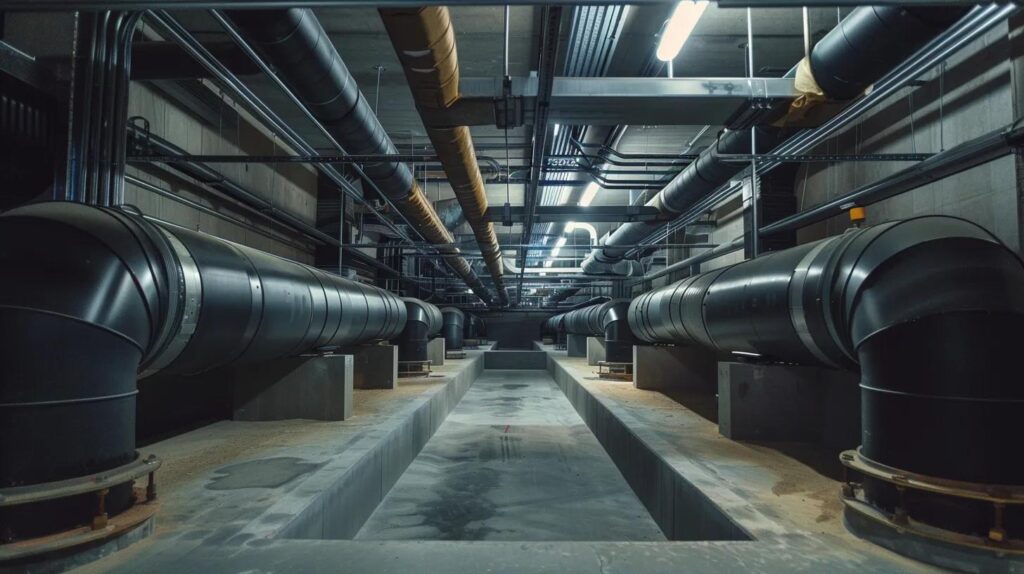
Ongoing maintenance is essential to prevent mold after the initial installation of ventilation systems. Regular checks help ensure optimal performance and a consistently dry environment.
What Are the Signs That Ventilation Systems Need Servicing?
Increased humidity, unusual fan noises, reduced efficiency, and dust buildup are signs that maintenance is needed. Early detection through regular checks can prevent severe moisture issues.
How Often Should Dehumidifiers and Fans Be Cleaned or Replaced?
It is recommended to clean these systems at least every three months and replace filters annually, or more frequently if dust and moisture levels are high, ensuring that airflow remains unobstructed.
Can Air Purifiers Help Long-Term Mold Prevention?
While not a standalone solution, air purifiers reduce airborne mold spores and allergens, complementing robust ventilation systems to lower the overall moisture and particulate load.
What Are Common Mistakes to Avoid in Basement Ventilation?
Avoid improper system sizing, neglecting routine maintenance, and failing to integrate ventilation with waterproofing and proper drainage. Cost-cutting in these areas can result in higher long-term costs due to water damage and mold remediation.
How Does Proper Ventilation Complement Mold Remediation Efforts in Finished Basements?
After mold remediation, effective ventilation is crucial to flush out residual spores and prevent immediate mold return by introducing fresh, dry air.
Why Is Ventilation Critical After Mold Removal?
Proper post-remediation ventilation helps clear remaining spores and maintains low moisture levels, reducing the risk of mold quickly re-establishing on surfaces.
How Can Ventilation Systems Be Integrated With Mold Inspection Services?
Coordinating regular mold inspections with ventilation adjustments forms a comprehensive air management plan, ensuring that humidity and moisture are continually controlled to ward off mold recurrence.
What Warranty and Support Should I Expect From Ventilation Professionals?
Reliable professionals provide warranties covering parts and labor along with maintenance guidelines, ensuring that the system remains effective and mitigating future moisture-related issues.
What Additional Moisture Control Solutions Support Basement Ventilation?
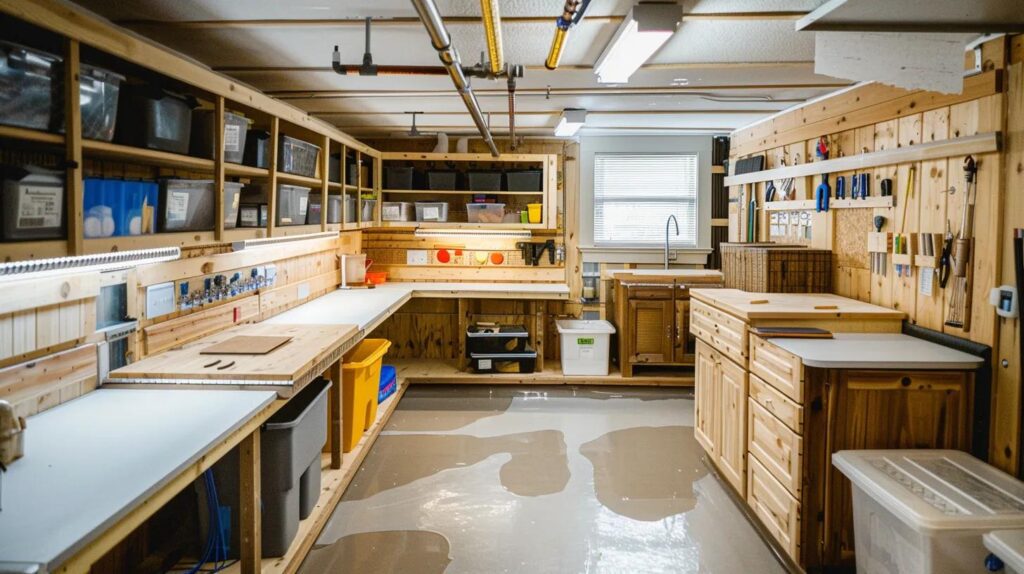
Beyond ventilation, additional moisture control measures enhance mold prevention. A combined approach using waterproofing, vapor barriers, and proper drainage offers robust defense against moisture intrusion.
How Does Basement Waterproofing Work With Ventilation to Prevent Mold?
Waterproofing techniques such as sealing cracks, installing vapor barriers, and applying specialized coatings reduce external water intrusion and work synergistically with ventilation to manage internal moisture buildup.
What Role Do Vapor Barriers Play in Moisture Control?
Vapor barriers block water vapor from seeping through walls, floors, and ceilings. Their use alongside ventilation reduces condensation and the risk of subsequent mold growth.
Can Landscaping and Exterior Drainage Affect Basement Ventilation Needs?
Effective landscaping and exterior drainage, such as proper soil grading and downspout installation, prevent water from pooling near the foundation, thereby reducing the burden on interior ventilation systems and helping maintain optimal humidity levels.
Frequently Asked Questions
Q: How often should I check my basement’s humidity levels? A: Monitor humidity daily with a digital hygrometer to keep levels between 30% and 50%.
Q: Can I handle ventilation installation myself? A: Minor adjustments are possible, but professional installation is recommended for custom ductwork and integration with waterproofing.
Q: How crucial is regular maintenance? A: Regular cleaning and filter replacements every few months are essential to avoid inefficiencies and moisture buildup.
Q: Do I need both dehumidifiers and exhaust fans? A: Yes, using both optimizes moisture removal and air exchange, enhancing indoor air quality.
Q: How do vapor barriers complement ventilation efforts? A: They prevent external moisture intrusion, allowing ventilation systems to effectively control internal humidity.
Final Thoughts
Proper ventilation is vital for maintaining a healthy finished basement, particularly in moisture-prone areas like Des Moines, Iowa. Recognizing signs of poor ventilation and integrating systems such as dehumidifiers, exhaust fans, and air purifiers can prevent mold growth and promote optimal indoor air quality. With regular maintenance and complementary moisture control methods like waterproofing and proper drainage, homeowners can protect their property and ensure a healthier living environment for their families.




